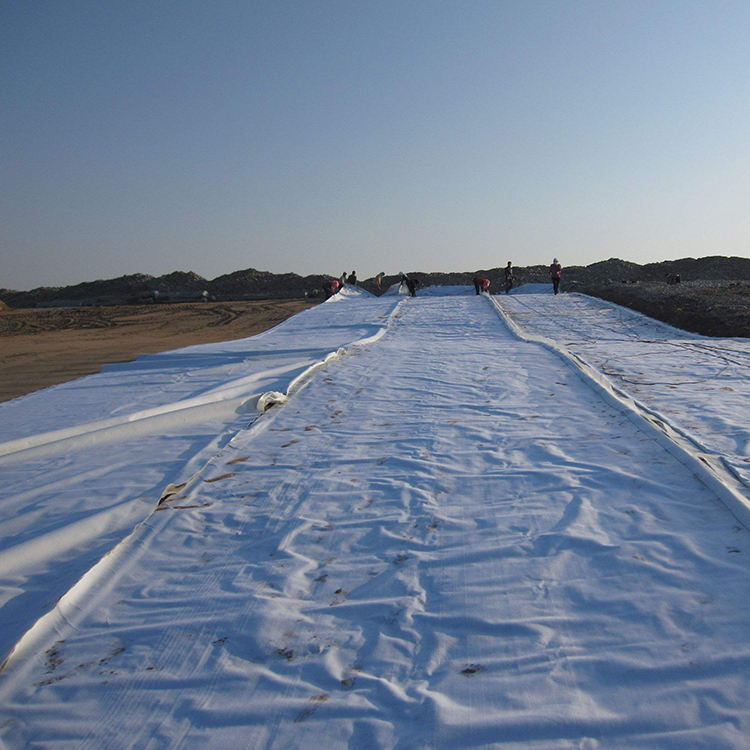In the world of civil engineering and construction, the materials you choose form the very foundation of your projects. When it comes to building stable roads, managing water flow, or reinforcing slopes, a reliable and cost-effective solution is essential. This is where wholesale geotextile plays a critical role. Geotextiles are permeable fabrics that, when used in conjunction with soil, have the ability to separate, filter, reinforce, protect, or drain. For large-scale projects, sourcing these materials in bulk isn’t just a matter of convenience; it’s a strategic decision that impacts project efficiency, budget, and long-term durability.
What is a Geotextile and Why Buy Wholesale?
A geotextile is a synthetic fabric used in a wide range of civil engineering and environmental applications. These fabrics are typically made from polypropylene or polyester and are categorized into two main types:
Woven Geotextiles: These are made by weaving threads together, creating a strong, stable fabric with high tensile strength. They are primarily used for stabilization and reinforcement, particularly in road construction and paving.
Non-Woven Geotextiles: Made from randomly oriented fibers bonded together, these fabrics are more permeable and excel at filtration, separation, and drainage. They are commonly used in drainage systems, erosion control, and as a protective layer.
For large-scale infrastructure, commercial, or residential developments, purchasing wholesale geotextile offers significant advantages:
Cost Savings: Buying in bulk from a wholesaler or direct manufacturer drastically reduces the per-unit cost, leading to substantial savings on a project’s overall budget.
Consistent Supply: Wholesale purchasing ensures you have a continuous and reliable supply of materials, preventing costly delays due to shortages.
Project Scalability: Access to a large quantity of material allows you to scale projects efficiently, from a single road to a sprawling housing development.
Quality Assurance: Reputable wholesalers provide high-quality, standardized products that meet engineering specifications, ensuring the integrity and longevity of your work.
Key Applications of Geotextiles in Bulk
The versatility of geotextiles makes them indispensable for a variety of construction challenges. Here are some of the most common applications where wholesale geotextile is a game-changer:
Road Construction & Pavement Overlays: Geotextiles separate the subgrade soil from the aggregate base, preventing the base material from sinking into the soft soil. This reinforcement extends the life of roads and reduces long-term maintenance costs.
Erosion Control & Sediment Filtration: Non-woven geotextiles are used on slopes and shorelines to prevent soil erosion. They allow water to pass through while trapping soil particles, stabilizing the ground and protecting waterways.
Drainage Systems: Geotextile fabrics are wrapped around perforated pipes in trench drains. They act as a filter, preventing soil and silt from clogging the pipe, thereby ensuring the system functions efficiently for years.
Retaining Walls & Slopes: In the construction of retaining walls, geotextiles are laid between soil layers to provide tensile strength, increasing stability and preventing soil movement.
Choosing the Right Wholesale Geotextile Supplier
When looking for a supplier, it’s important to partner with a company that understands the nuances of your industry. Consider these factors:
Product Range: A good supplier will offer both woven and non-woven options in various weights and strengths to suit different project needs.
Technical Expertise: The supplier should be able to provide technical data sheets and expert advice on which product is best for your specific application.
Logistics: Look for a supplier with efficient logistics and a clear understanding of your delivery requirements to ensure materials arrive on site when you need them.
Summary
The decision to purchase wholesale geotextile is a strategic move for any large-scale construction or engineering project. By offering a combination of cost-effectiveness, supply chain reliability, and superior performance, these materials provide the unseen support that ensures the longevity and stability of modern infrastructure. From preventing erosion to reinforcing our roads, geotextiles are a fundamental component of building better, safer, and more durable environments.
FAQ
Q1: What is the main difference between woven and non-woven geotextiles? A: Woven geotextiles are strong and used for separation and reinforcement, while non-woven geotextiles are more permeable and are best for filtration and drainage applications.
Q2: How does using a geotextile save money in the long run? A: Geotextiles prevent the mixing of different soil layers, which can reduce the amount of aggregate needed for a project. They also extend the lifespan of roads and structures, leading to lower maintenance and replacement costs over time.
Q3: Can geotextiles be used in residential landscaping projects? A: Yes, they are commonly used in residential projects for things like French drains, driveway reinforcement, and retaining walls, though the scale of purchase would typically be smaller than for a commercial project.
Q4: Is the thickness of a non-woven geotextile important? A: Yes, the thickness is an indicator of the fabric’s ability to filter and drain. Thicker non-woven geotextiles are generally more effective at filtering fine particles and are often used in demanding drainage applications.
Post time: Sep-01-2025

